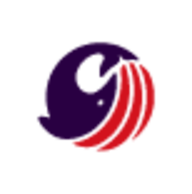

OWASP Zap and SonarQube Cloud are key players in the security and code quality analysis sector. OWASP Zap leads with its cost-effectiveness and open-source advantages, while SonarQube Cloud takes the edge with a comprehensive feature set, especially appealing to enterprises due to its enhanced integration capabilities.
Features: OWASP Zap provides a dynamic analysis toolset including intercepting proxy, fuzzer, and automated scanning, beneficial for identifying vulnerabilities. In contrast, SonarQube Cloud focuses on static code analysis with language support and quality tracking, offering real-time scanning and a robust dashboard for monitoring code quality metrics.
Room for Improvement: OWASP Zap could enhance its user interface for non-technical users and improve direct customer support. Expanding its documentation could assist new users. SonarQube Cloud might benefit from reducing false positives in vulnerability detection, improving documentation for better CI/CD integration, and providing enhanced support for large enterprise clients.
Ease of Deployment and Customer Service: OWASP Zap is straightforward to set up and relies on community support, making it easy for small teams but potentially lacking for larger needs. SonarQube Cloud has a more involved deployment with professional support that aids in seamless integration, better suited for large organizations requiring direct assistance.
Pricing and ROI: OWASP Zap, being open-source, is free, offering significant savings and ROI for small and medium businesses focused on cost-effectiveness. SonarQube Cloud, while more expensive, provides a high ROI via its ability to improve code quality and security, justifying the cost for larger enterprises focusing on comprehensive support and software integrity.
| Product | Market Share (%) |
|---|---|
| SonarQube Cloud (formerly SonarCloud) | 4.2% |
| OWASP Zap | 4.5% |
| Other | 91.3% |


| Company Size | Count |
|---|---|
| Small Business | 10 |
| Midsize Enterprise | 11 |
| Large Enterprise | 21 |
| Company Size | Count |
|---|---|
| Small Business | 9 |
| Midsize Enterprise | 3 |
| Large Enterprise | 4 |
OWASP Zap is a free and open-source web application security scanner.
The solution helps developers identify vulnerabilities in their web applications by actively scanning for common security issues.
With its user-friendly interface and powerful features, Zap is a popular choice among developers for ensuring the security of their web applications.
SonarQube Cloud offers static code analysis and application security testing, seamlessly integrating into CI/CD pipelines. It's a vital tool for identifying vulnerabilities and ensuring code quality before deployment.
SonarQube Cloud is widely used for its ability to integrate with tools like GitHub, Jenkins, and Bitbucket, providing critical feedback at the pull request level. It's designed to help organizations maintain clean code by acting as a quality gate. This service supports development methodologies including sprints and Kanban for ongoing vulnerability management. While appreciated for its dashboard and integration capabilities, some users find initial setup challenging and note the need for enhanced documentation. The recent addition of mono reports and microservices support offers deeper insights into security and code quality, though container testing limitations and false positives are noted drawbacks. Manual intervention is sometimes required to address detailed reporting, with external tools being necessary for comprehensive analysis. Notifications for larger teams during serious issues and streamlined integration of new features are also areas of improvement.
What are the key features of SonarQube Cloud?In specific industries, SonarQube Cloud finds application in finance and healthcare where code integrity and security are paramount. It allows teams to identify critical vulnerabilities early and ensures that software development aligns with industry regulations and standards. By continuously analyzing code, it aids organizations in deploying secure and reliable applications, fostering trust and compliance.
We monitor all Static Application Security Testing (SAST) reviews to prevent fraudulent reviews and keep review quality high. We do not post reviews by company employees or direct competitors. We validate each review for authenticity via cross-reference with LinkedIn, and personal follow-up with the reviewer when necessary.